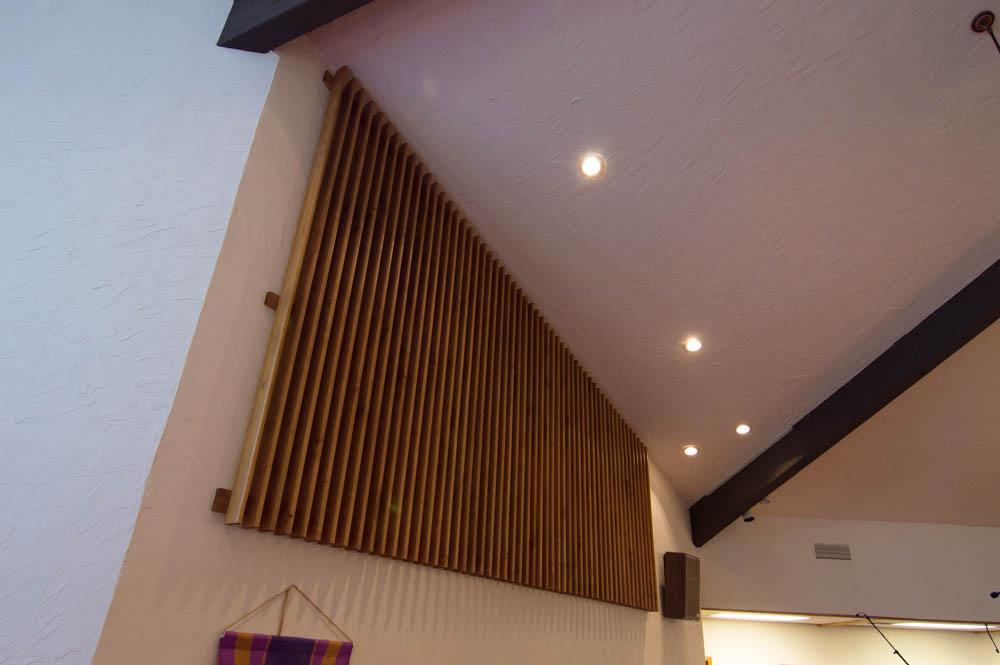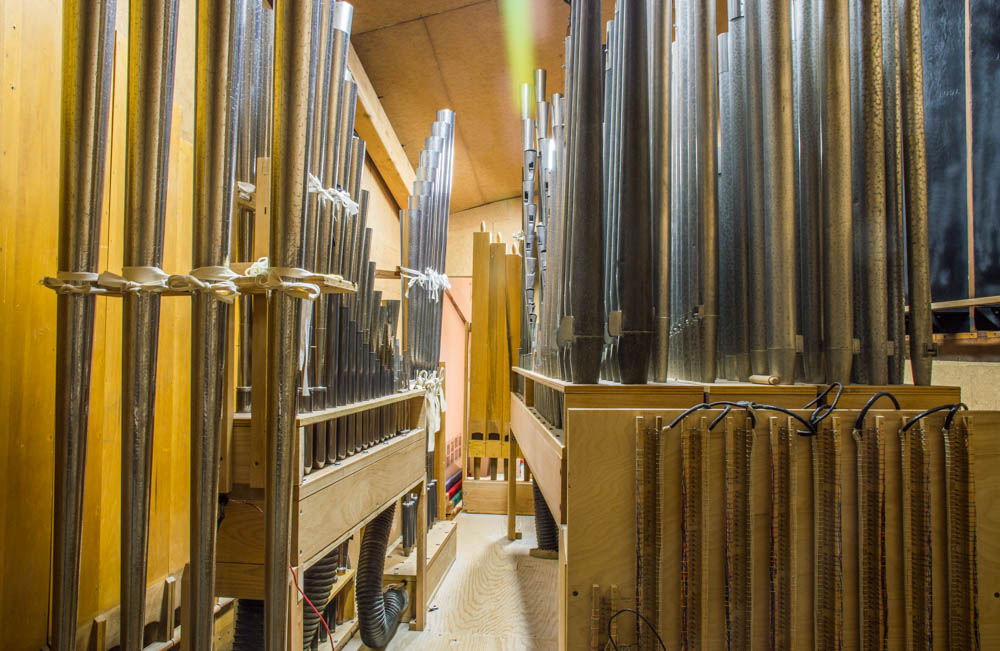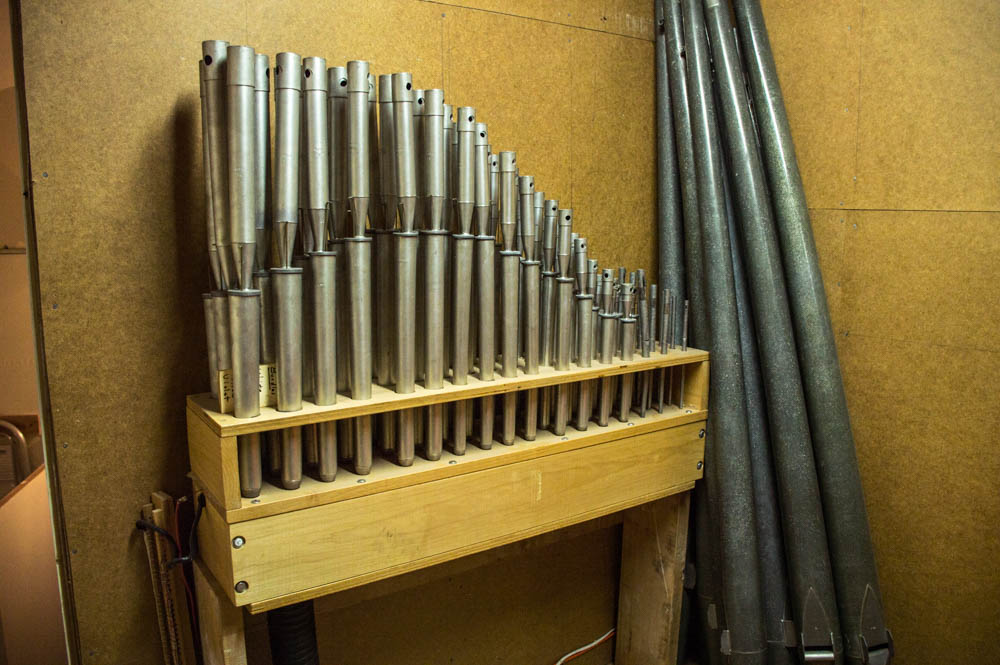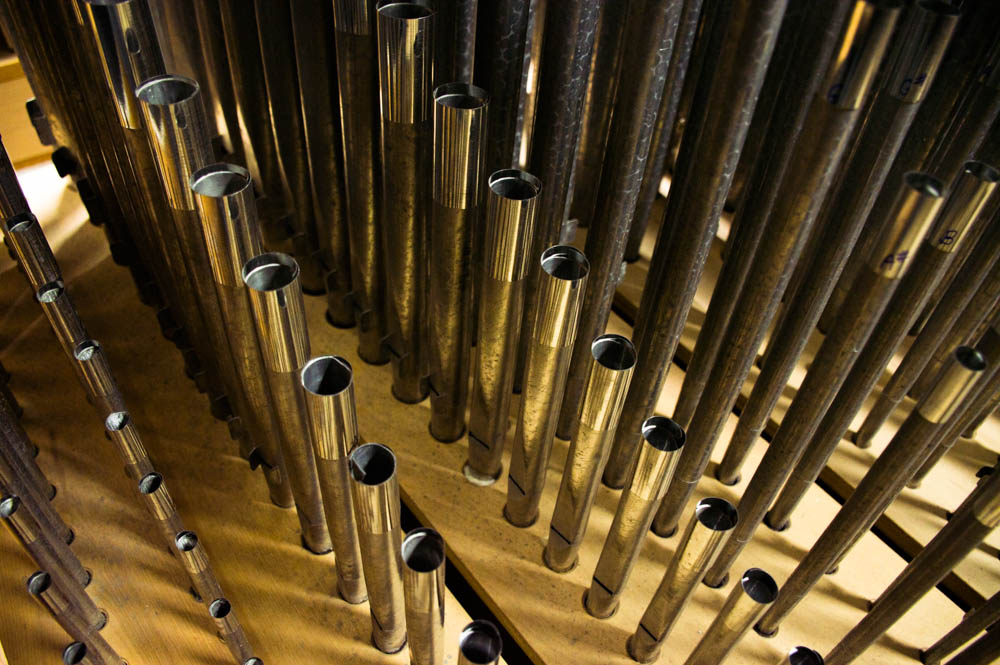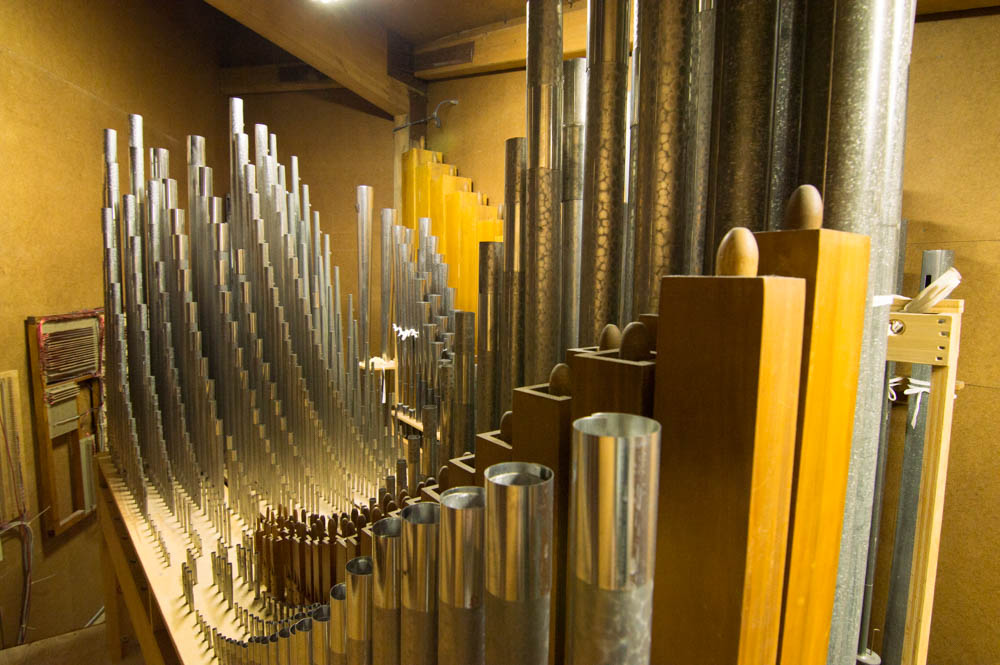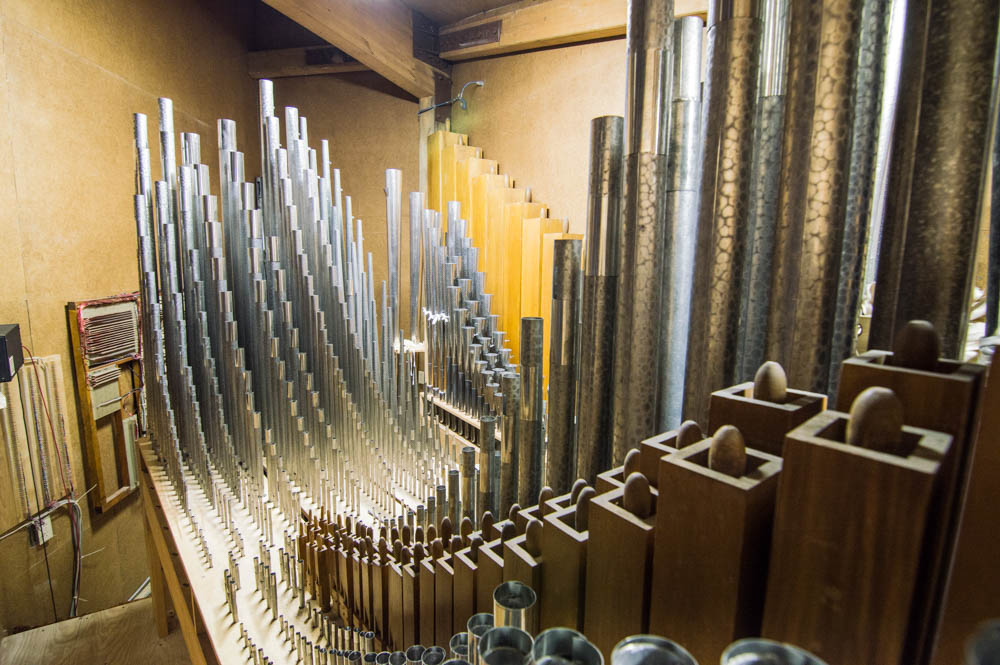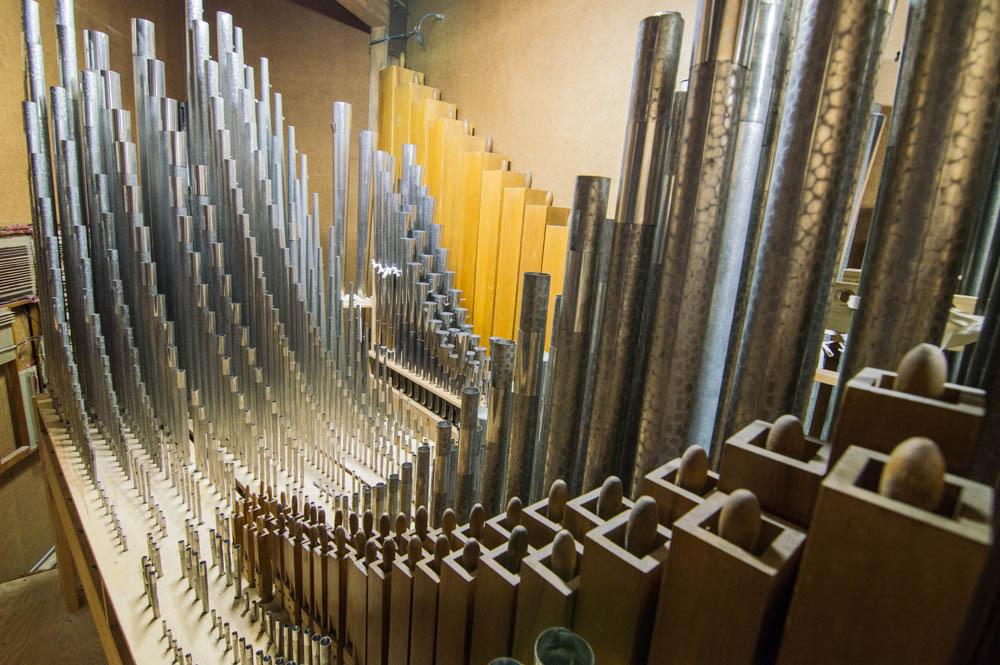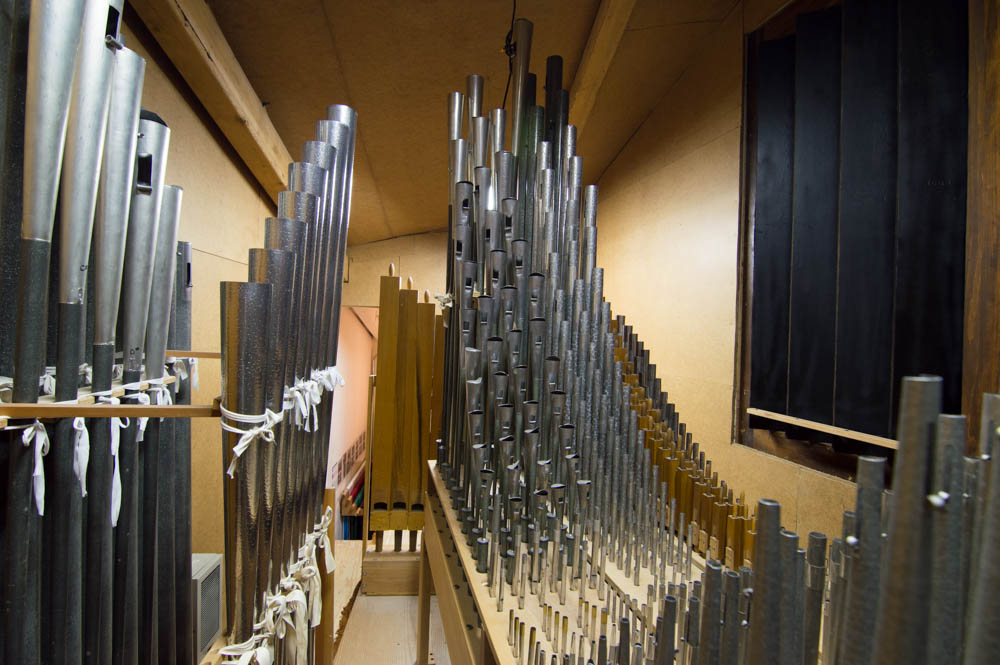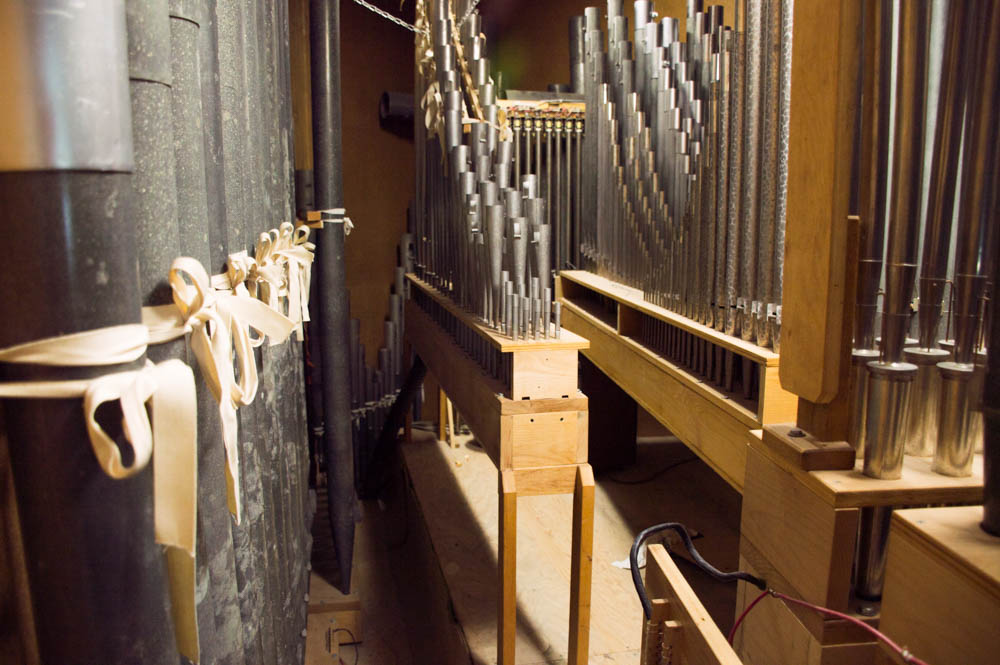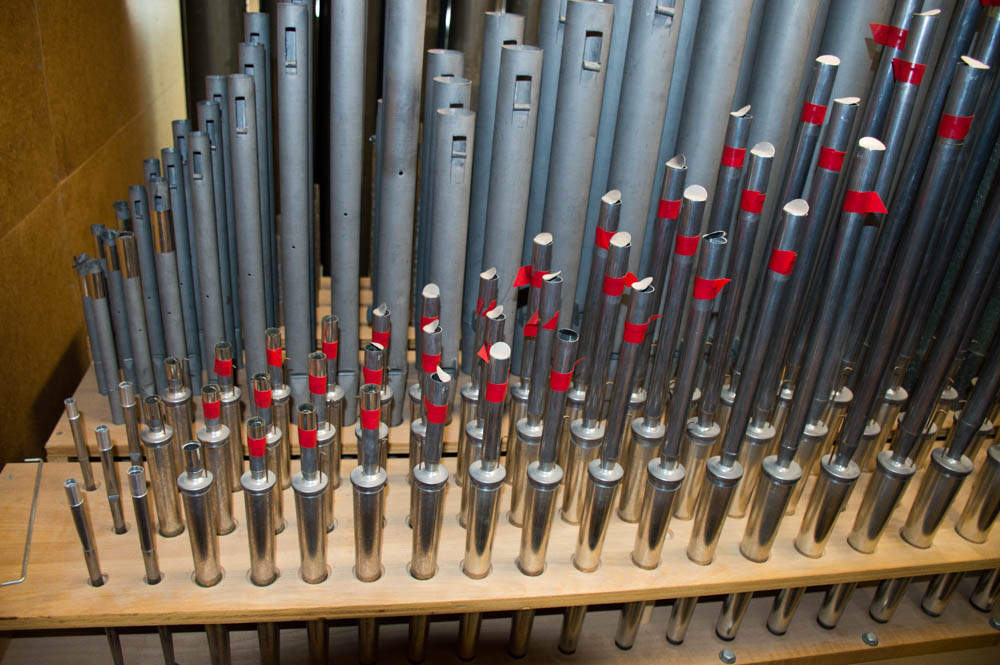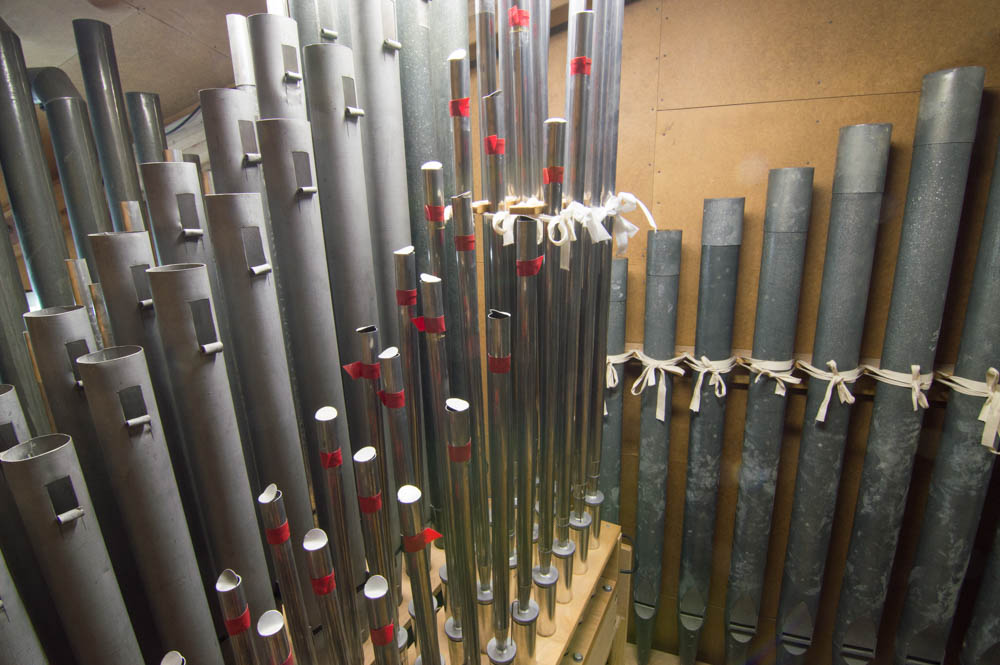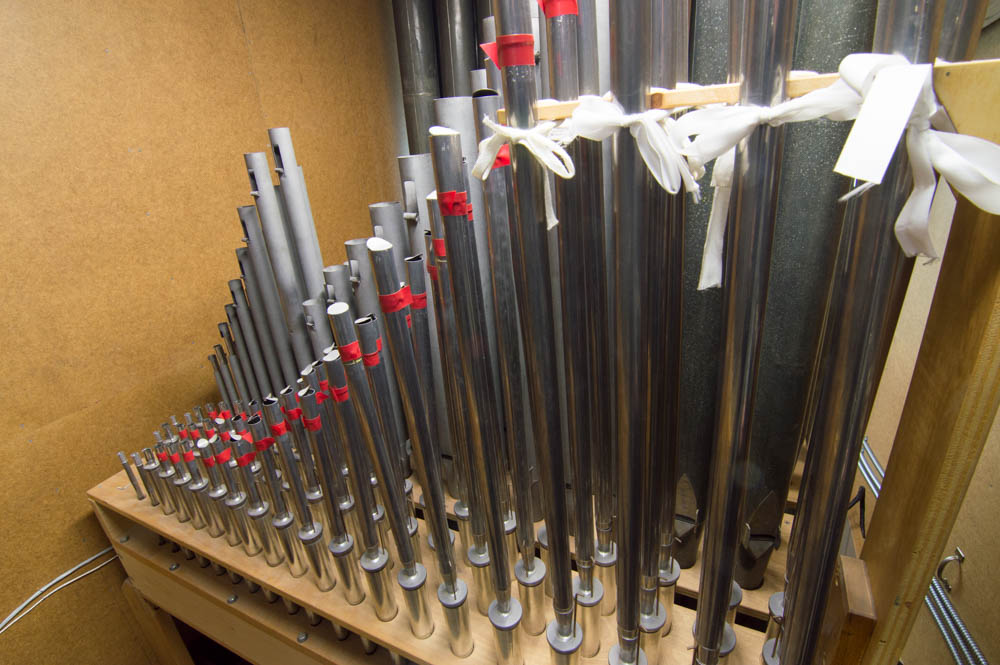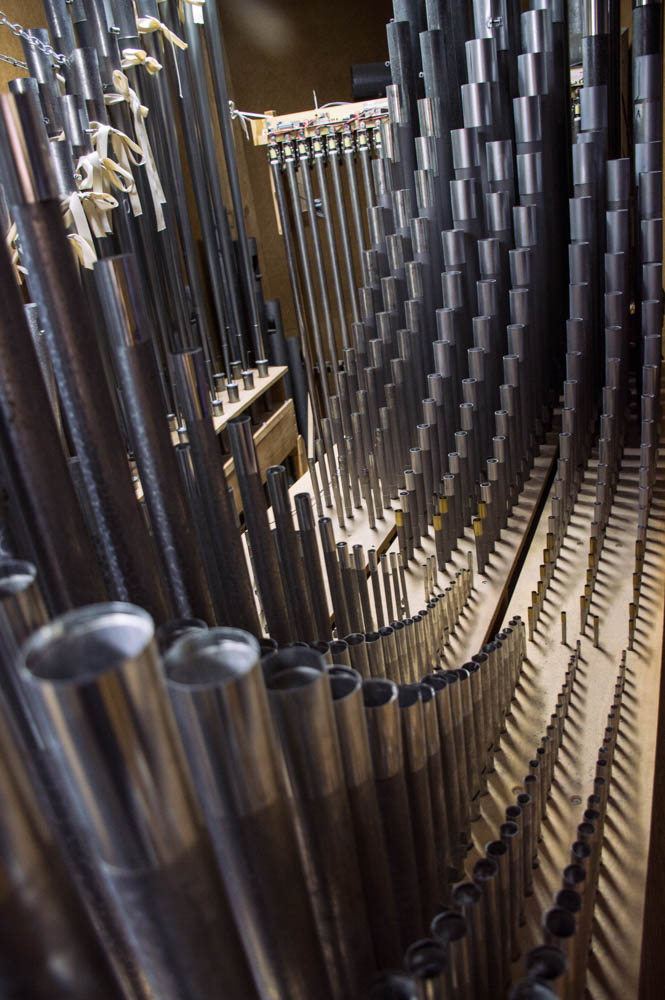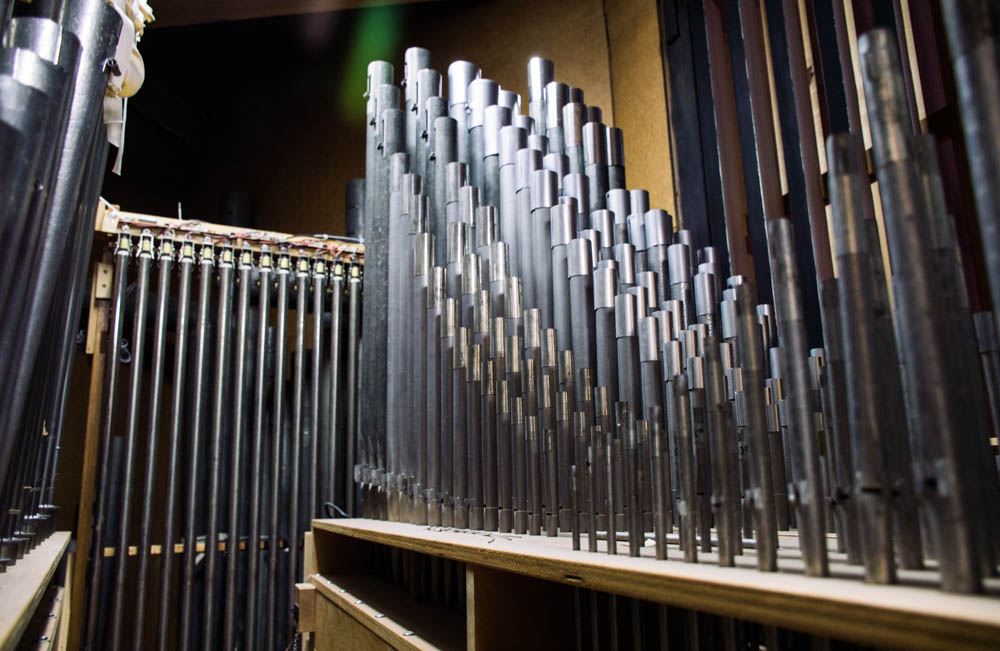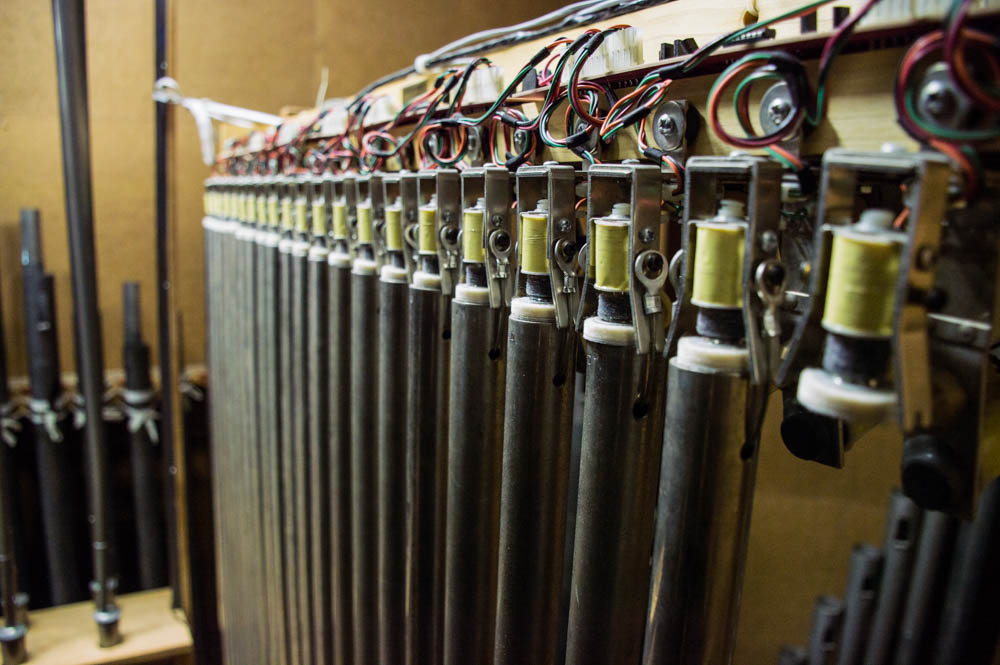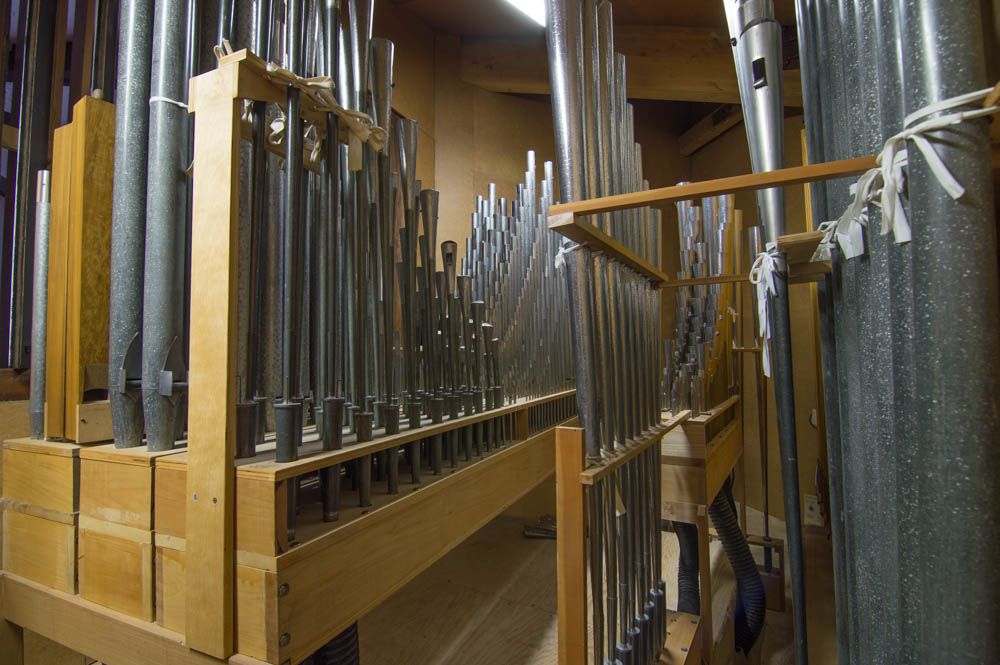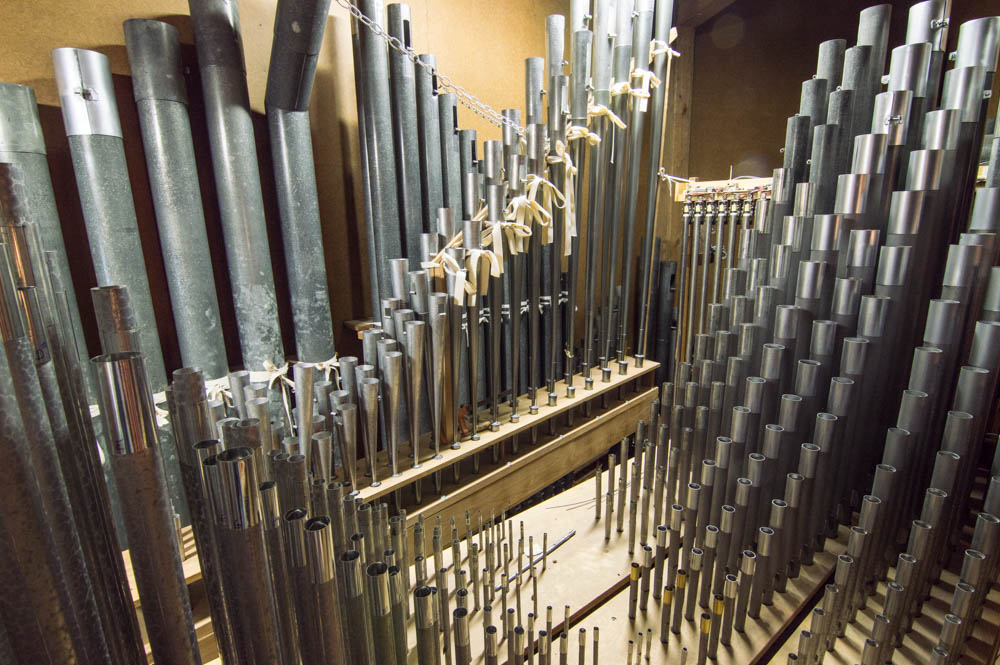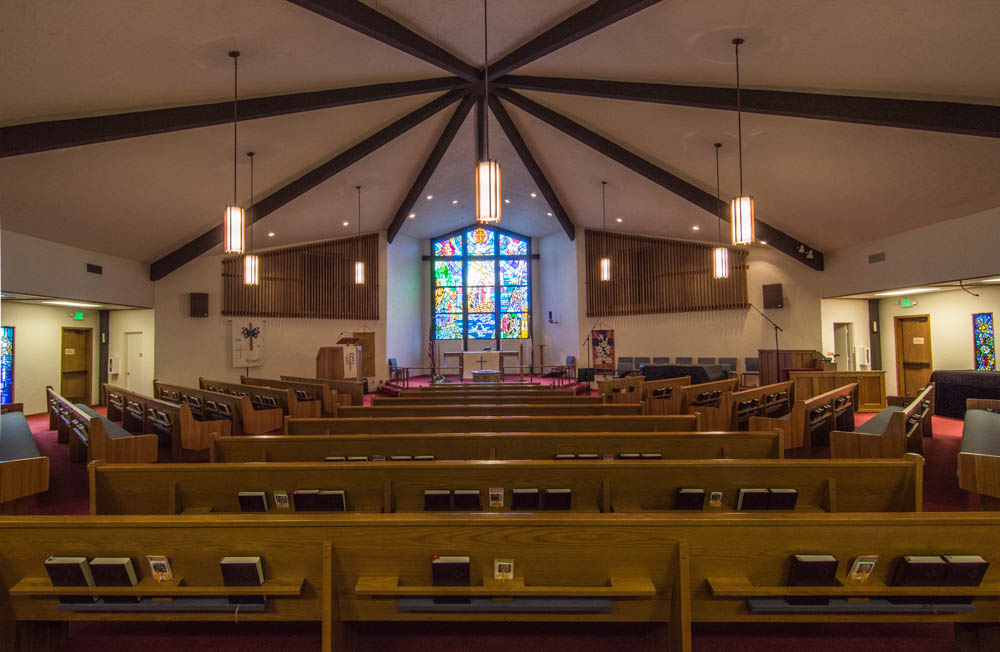
This is the Sanctuary, showing the left and right Organ Chambers at the front of the room.
If you find the large wood detail on the wall, on either side of the stain glass window, these are the grill work and the swell shutters are directly behind that. The chambers are behind swell shutters.
These can open and close, providing some volume control from the chamber rooms to the main room.
The Pulpit is on the left, and the choir area is on the right, and the Organ Keyboards are just to the right of that.
The center of the ceiling is at least 25 feet high, and this design was needed for fitting all of the large pipes.
The back of the chamber has several layers of sound proofing, and is approximately 10 inches thick.
